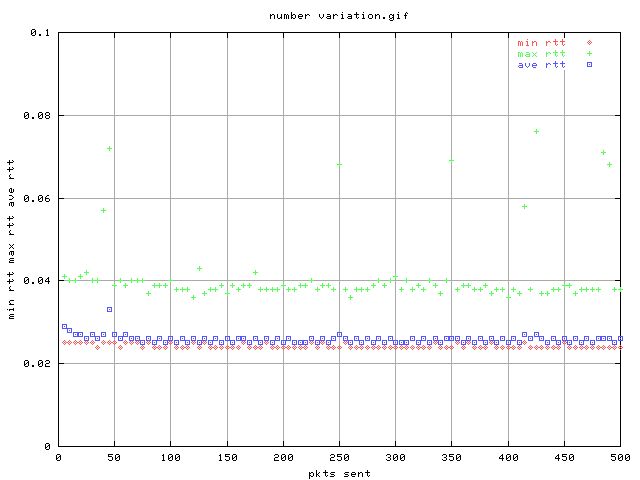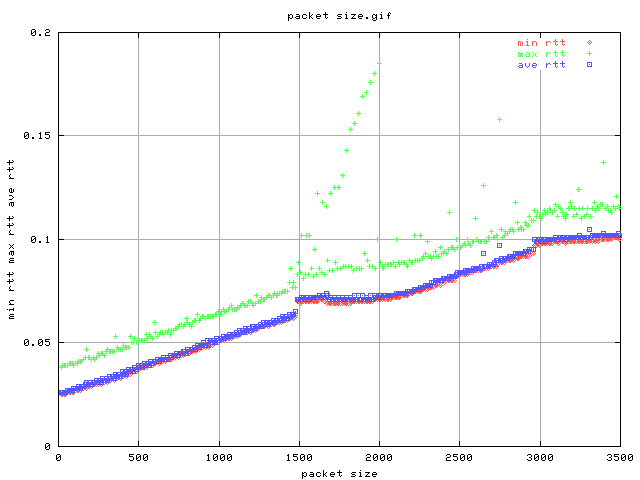


Back to Back Performance Tests - PING
Purpose
The purpose of these tests is to determine the latency on the Intel GigE cards in the mbng machines. By doing this, we hope to be able to derive baseline performances of the cards in order to better understand the performance in the WAN.
Method
Using standard ping (as supplied in Redhat 7.2), a set of scripts were used to create tables of latencies for various packet sizes and interpacket times.
The scripts are:
do_packetsize.pl - a script to alter the packet sizes of ping packets
do_packetsize-vs-interval.pl - used by superusers, it enables the interpacket time between consequtive packets to be altered.
do_txqueuelen.pl - enables the txqueuelen parameter as defined in ifconfig to be altered for various packetsize-vs-interval tests.
Tests were performed back-to-back from mbng2 to mbng3. Both machines were configured identically with Redhat 7.2 and kernel version 2.4.19 with Web100 alpha 2.1.
Results
Experiment 0: Determine the measurement parameters
We altered the number of packets sent and determined the statistical variation of the samples. We used interpacket rate of 1 ping every 1millisecond and varied the number of packets from 5 to 1000 in steps of 5.
[root@mbng2 ping]# ./do_number.pl -d 192.168.0.3 -s 16 -c 2 -i 1 -n 5..1000:5
-o summary.log -f number
log file in tsv

So we choose to send 80 packets as it appears to be have the least variation with least number of packets sent.
Experiment 1: Alter packet size
./do_packetsize.pl -d 192.168.0.3 -c 2 -i 1 -n 80 -s 16..3500:10 -f packetsize -o summary-last.log

This has the following regions:
- linear region between 0 and 1480 (ip payload) - proportional due to the increased latency in sending and recving the extra payload of the ip packet. [TODO: simple linear regression to get gradient -> derive rate]
- constant region about 1480 to ~2000 - after 1480 ip payload (1500 packet), the ethernet frame is not big enough to hold the packet. As such, it has to be split into two (or more) ethernet frames. This constant region is caused by the preamble etc. that ethernet has to introduce to pad packets. As such, this region is basically imposed by the minimal ethernet frame size.
- linear region 2000 to ~3000. After we get the fragemented ip packet that is larger than the mininal imposed ethernet frame size, we get another linear region similar to that in case 1. [QUESTION: why is the latency not linear (or even higher), but actually less in terms of the gradient? - ethernet headers etc?]
- Repeat for each frame...
| Wed, 23 July, 2003 13:07 |
Room D14, High Energy Particle Physics, Dept. of Physics & Astronomy, UCL, Gower St, London, WC1E 6BT